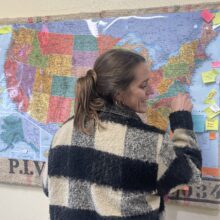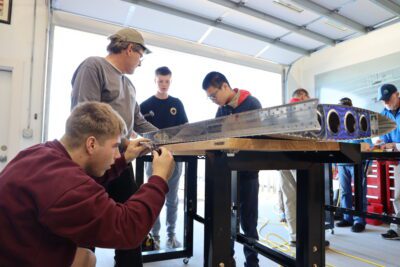|
|
At around 7:10 a.m., two school buses shift into park in front of the dock on Knotts Island. Students wait for the word from their bus driver, Lori Roth, to make the school bus switch. Off goes the Moyock Middle School students, on comes students heading to J.P. Knapp Early College, Currituck County Middle, and Currituck County High School. This coordinated effort to pick up and deliver North Carolina’s northeastern-most county students is layered.
While only some Knotts Island middle and high school kids do a bus swap mid-route, all board the ferry to head to the mainland for school.


Waiting to get onto the ferry, the quiet of the Currituck Sound is broken only by duck hunters in neighboring marshes. Knotts Island is around seven miles long and two miles wide, a North Carolina peninsula that borders Virginia in the Currituck County Schools district.
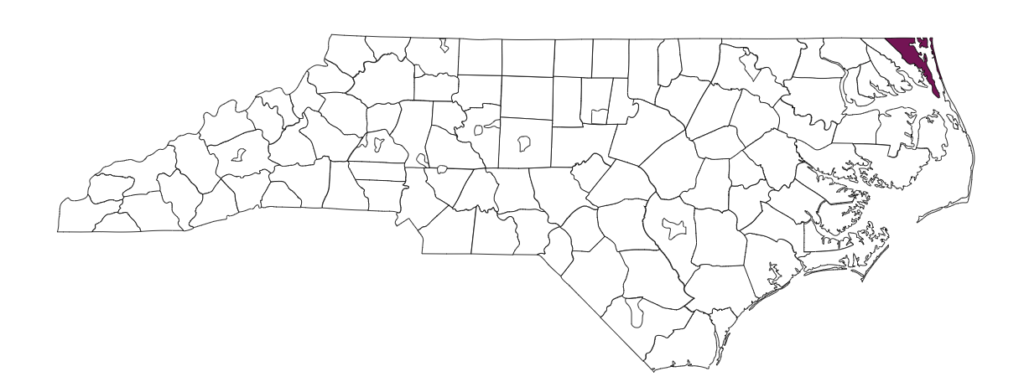

The ferry takes residents, along with the buses, to the mainland and back, running five routes a day. The trip is 45 minutes long, and school buses always take priority.
This is just one way — by bus and ferry — that some of our most rural students get to school.


Driving this route has been Roth’s daily commute on Knotts Island for 18 years.
“I’ve been driving for so long. A lot of the kids I drove in elementary now have kids in school,” Roth said.
She starts her morning routine at Knotts Island Elementary, doing her safety checks and warming up the bus.
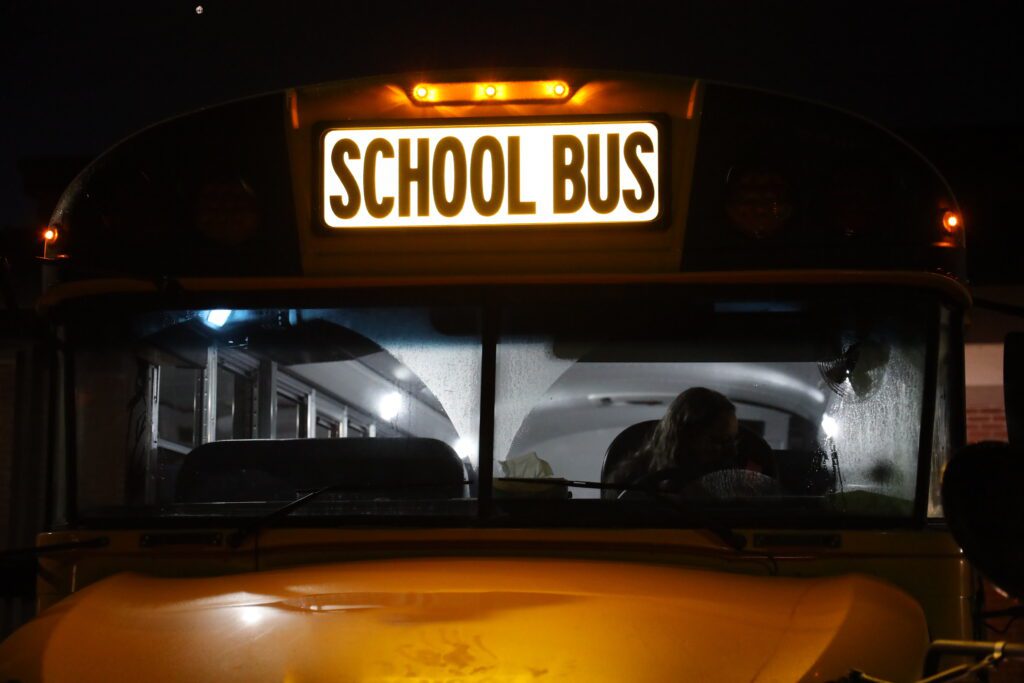

Her route picks up middle and high school students at the south end of the island, the first getting on at 6:40 a.m. The ferry is weather-dependent, so if the waters are too rough or shallow, her trip becomes overland. Adding time and money, she has to head into Virginia to dip back into Currituck County.
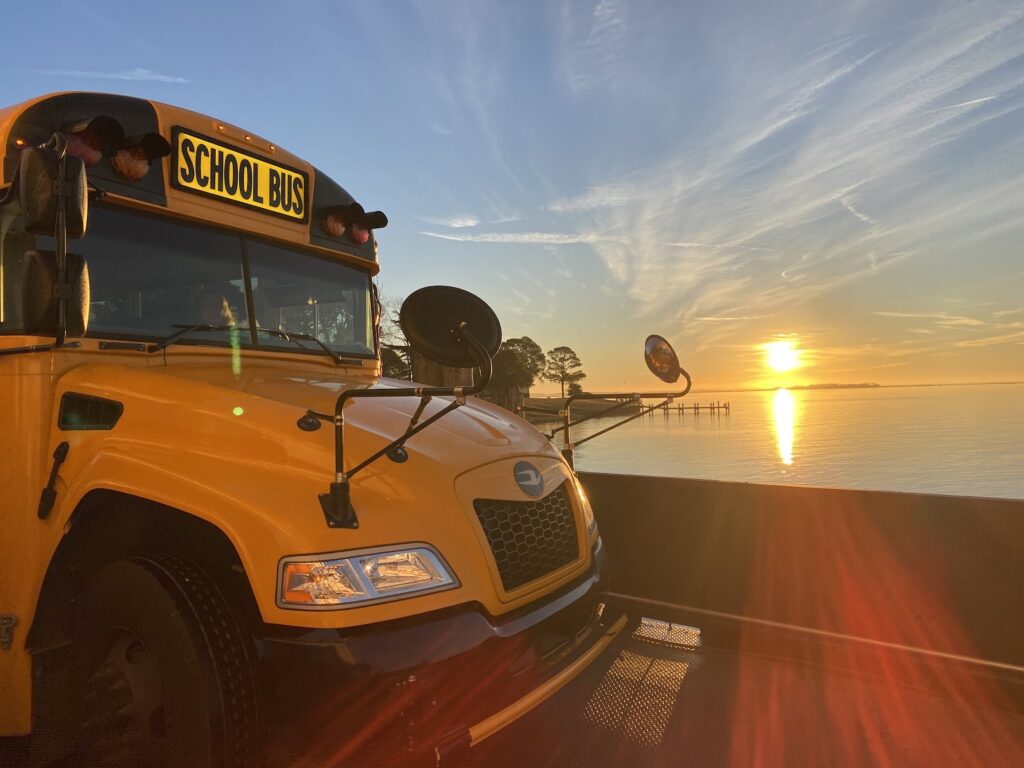

At EdNC, we’ve ridden over bridges, around lake bends, and winding country roads on school buses. We’ve been with a driver in Haywood County who had to be lifted via bucket truck along with students over a swollen river with no bridge. We’ve taken home students in the Qualla Boundry with the first fleet of electric school buses. We’ve ridden in a storm in Transylvania County with administration who were filling in routes when bus drivers were hard to come by.
This, however, was our first time aboard a boat on that the big yellow bus. In what other ways is Currituck County and its Knotts Island unique?
Almost 100 years of Knotts Island Elementary
J.P. Knapp was a New Yorker with a heart and habit for hunting. In 1916, he visited Currituck County and fell in love, purchasing land and building a hunting club.
His passion for water fowl conservation led him to establish the More Game Birds in America Foundation, eventually renamed to what is now known as Ducks Unlimited.
A portrait of Knapp hangs at Knotts Island Elementary, as he was instrumental in the early funding of Currituck’s school system. The building itself is about to celebrate its 100-year anniversary in 2025.
“It’s one of our original schools. And so it has great historical value. At times, it has housed over 200 students in the building. It is a special place for kids to go to school. Our staff that work there tend to stay there. They recognize what a special environment it is.”
Dr. Matt Lutz, Currituck County Schools superintendent
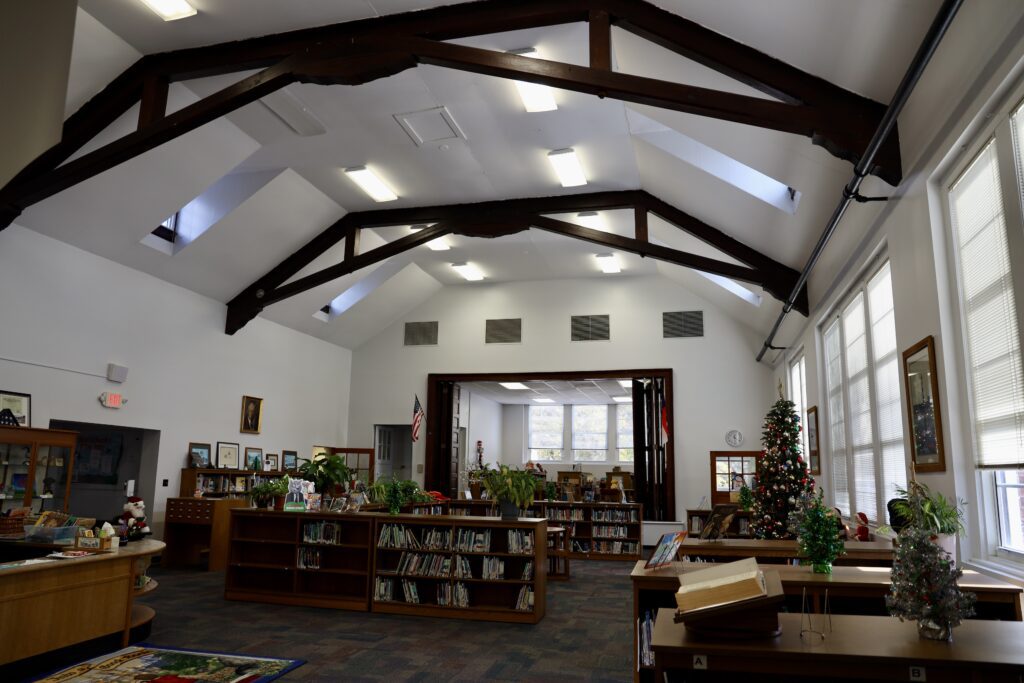

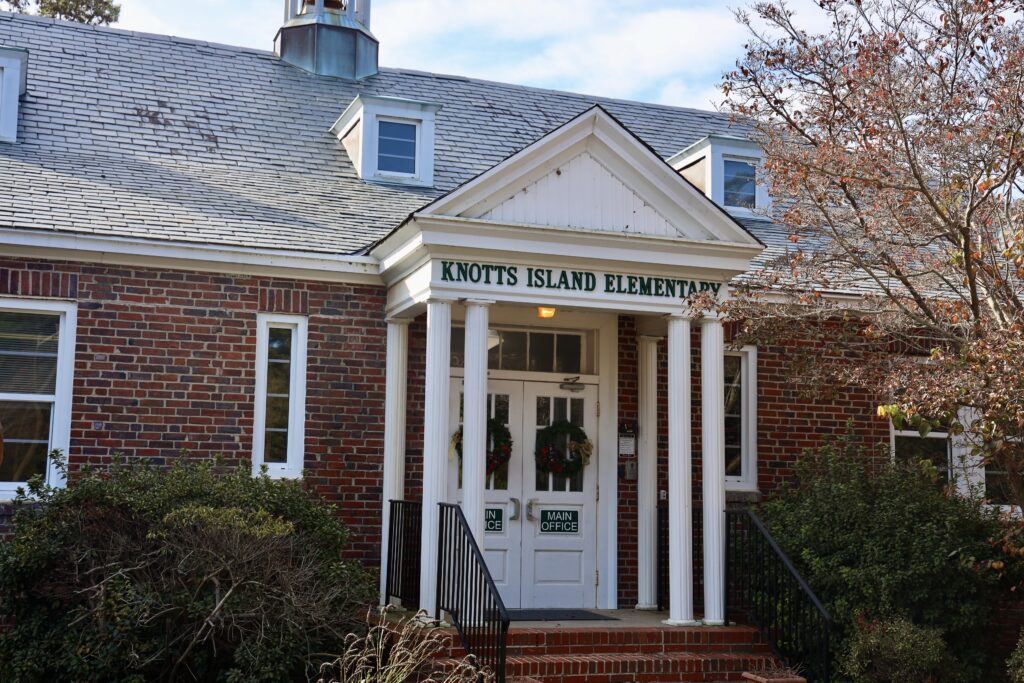

The school serves around 90 K-5 students with a part-time preschool class on Knotts Island.
“As far as the core (staff) of the school, they grew up here, they went to school here, and they know everybody on the island,” says principal Kevin Goins.
The average retention is 17 years for the educators at the elementary school.
“Here, everybody knows everybody,” Goins says. “The community support is not like anything I’ve ever seen.”
Adding the years together of service from the school’s secretary, first and third grade teachers, cafeteria manger, physical education teacher, and media and technology teacher — the total sums up to over 125 years.
“I’m the luckiest principal around because the staff, they know what to do. And if something’s needed, you don’t have to go ask them. They’re going volunteer to come do it.”
Kevin Goins, principal at Knotts Island Elementary
Goins started his teaching career in Virginia. He then moved into law enforcement, but found himself eventually back in a school, this time working as a school resource officer in Currituck County. What he loved about that position was the interaction with families and kids, which made him realize he wanted back into the classroom.
He started his education career again in 2003 as a middle school math and science teacher on the mainland. He eventually moved into administration, and he now leads Knotts Island Elementary.
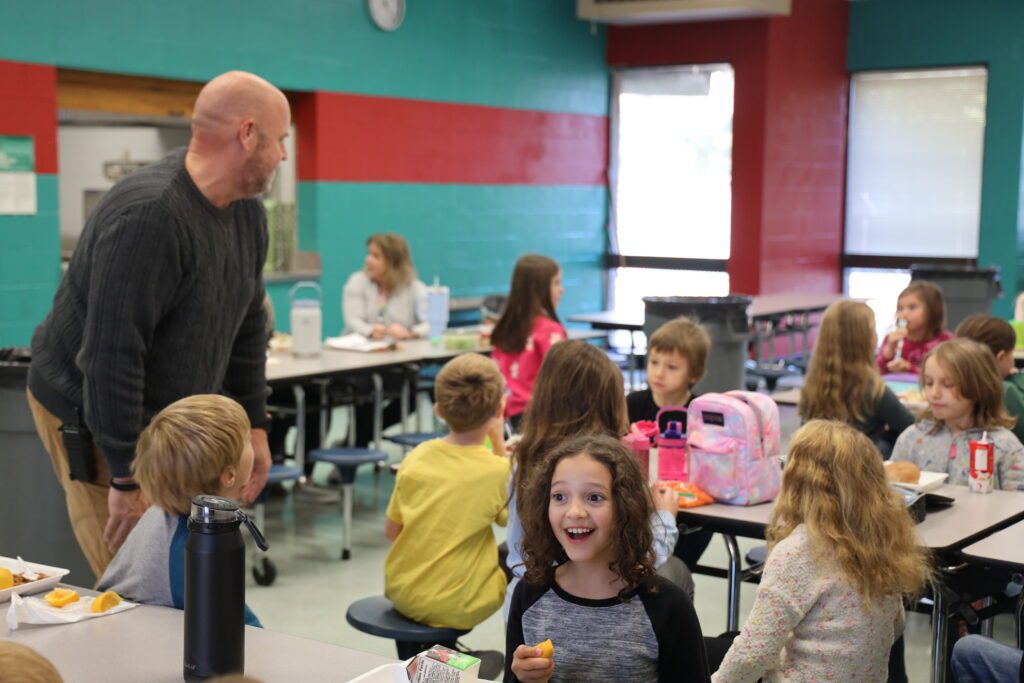

Up the road from Knotts Island Elementary is Mackay Island National Wildlife Refuge, which was established in 1960. The majority of Knotts Island is taken up by the protected marshes, land, and water of this refuge.
Laurel Hall, once a student at Knotts Island Elementary, wrote a poem about her home. Her words hang framed in the almost century old building.
Knotts Island
By Laurel Hall
Knotts Island is the home for me,
It is inbetween dry land and sea.
The Island is lined with marsh and trees,
There’s a lot of wildlife including bees.
In the winter you hear geese,
Honking, breaking through your peace.
The bay fills up with swans,
And the geese flock to the marsh ponds.
Sometimes you hear the shot of a gun,
That means the men are having fun.
They hunt rabbits, foxes, and ducks,
Coons, nutria, and bucks.
In the summer mayflies bite,
And the sunshines very bright.
You can fish and crab on a boat,
Or tan in the sun while sitting on a float.
The biggest building is the school,
All the kids go there because it’s the rule.
There are two places to eat,
The food is good and the waitresses are sweet.
One ferry is just enough,
But sometimes the water is rough.
You could also take the causeway,
Knotts Island is a great place to stay.
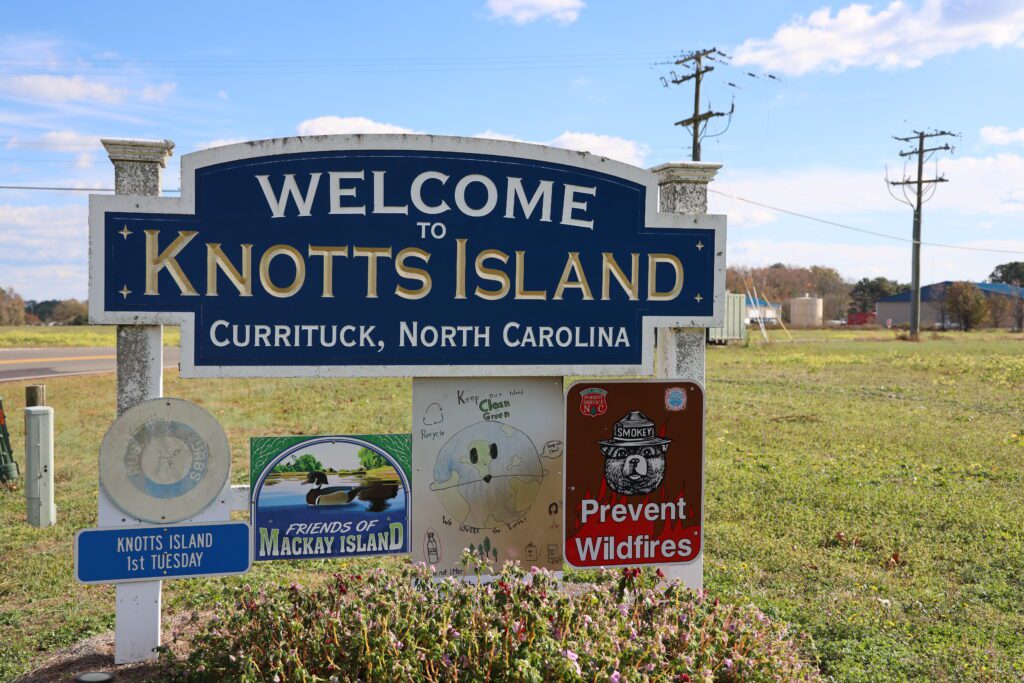

A changing Currituck County
Currituck County is geographically unique, and the population is increasing on Knotts Island as well as the mainland. It is the second fastest growing county in the state, with a 12.77% population change from July 2019 to July 2022. The county is designated Tier 3, and is the least economically distressed in the state, according to the North Carolina Department of Commerce.
It is also considered majority — 98% — rural. This group of factors creates a myriad of opportunities and challenges for North Carolina’s northeastern-most county.
Currituck’s mainland is 50 miles long from the Virginia border to the bridge going into Dare. Then you have Knotts Island, which lies on the other side of the Currituck Sound. Getting to a number of communities in the county requires driving through a different state and a different county.
Superintendent Matt Lutz said the majority of Currituck’s growth has taken place at the northern end, as they have become a sort of bedroom community for Hampton Roads, Virginia.
Two challenges rise to the top when talking about teacher recruitment. Across the state line, first-year teachers can start with as much as $17,000 more in salary than in North Carolina.
And as with many counties, Currituck struggles with affordable housing, especially with such rapid growth. The water and sewage infrastructure is not consistent across the county, and those public services are expensive to establish.
Lutz became superintendent in September 2020, so he is used to challenges. With the increase in population, they have seen and anticipate more students coming into the school system. The district has seen an 8% increase in its Month 1 average daily membership since 2019.
During his tenure, Currituck County Schools has expanded the capacity for Moyock Middle by 160 students, and at Moyock Elementary by 200 students. The district has purchased land for a new elementary school in Tulls Creek that will have room for 800 students.
He said the best part of living and working in Currituck is “without a doubt the community itself.”
“We have great community support. We have kids that come to school, ready and active and engaged to learn… The community, the school system itself, the quality of our teachers and the kids, make people want to work here.”
Dr. Matt Lutz, Currituck County Schools superintendent


